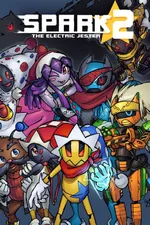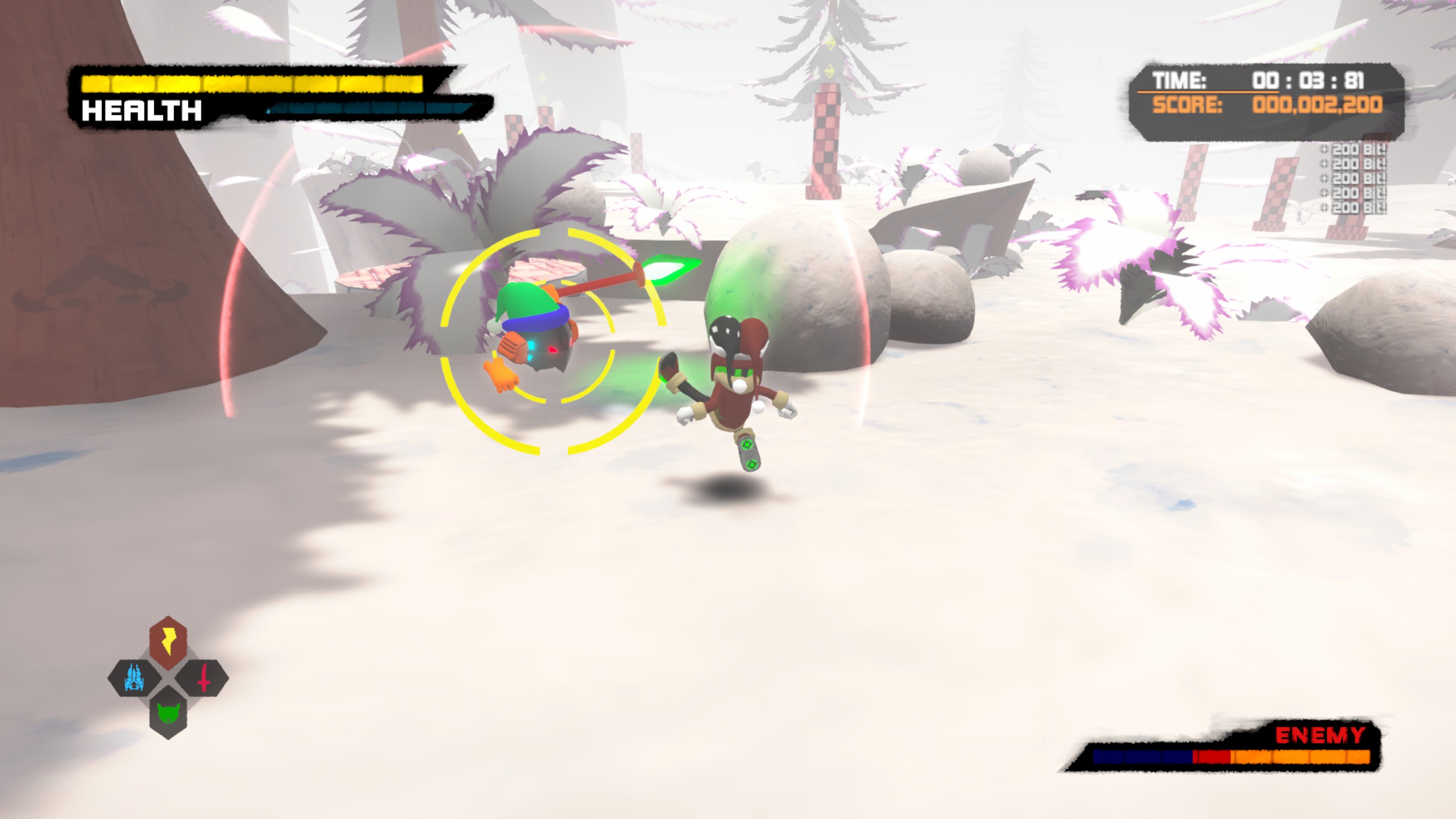Search
[{{{type}}}] {{{reason}}}
{{/data.error.root_cause}}{{{_source.title}}} {{#_source.showPrice}} {{{_source.displayPrice}}} {{/_source.showPrice}}
{{#_source.showLink}} {{/_source.showLink}} {{#_source.showDate}}{{{_source.displayDate}}}
{{/_source.showDate}}{{{_source.description}}}
{{#_source.additionalInfo}}{{#_source.additionalFields}} {{#title}} {{{label}}}: {{{title}}} {{/title}} {{/_source.additionalFields}}
{{/_source.additionalInfo}}- Details
- Category: Computer
- By Cinque Pierre
- Hits: 1343
Spark the Electric Jester 2 (PC)

Spark the Electric Jester 2
Developed By: Feperd Games
Published By: Feperd Games
Released: May 16, 2019
Available: Windows, Xbox One, Xbox Series S/X
Genre: Action; Platformer
ESRB Rating: E10+ for Everyone 10+: Fantasy Violence
Number of Players: Single player
Price: $12.99
If the first Spark the Electric Jester game was a homage to the 2D Sonic era, this sequel is more of a homage to Sonic’s 3D era. Spark 2 wears its influence on its sleeve as its title screen, file select, and even tone are reminiscent of Sonic Adventure 2. Funnily enough, the main character of the first entry, Spark, is completely absent from the sequel—only receiving a brief mention in the intro cutscene.
It turns out that Spark didn’t truly defeat the main antagonist, Freom, in Spark 1. He had a spare body and retreated into that one when Spark destroyed the other one in their final battle. As previously mentioned, Spark is missing so it’s up to Fark to save the world from Freom.
As Spark the Electric Jester 2 is now in 3D, it feels significantly different than its predecessor. It still takes the branching pathways and lengthy high-speed sections and transitions them into a 3D setting. While the levels themselves take less time on average to beat than Spark 1, they are in return large and expansive. Each stage has a unique gimmick to it. You may go underwater for one stage or dash through a massive train in another. For the most part, Fark controls very well in the stages. However, there is a setting in the options menu called smooth turning that can present a problem in the later levels when more accuracy is needed. I did play many of the later levels with this setting on and off, and playing them while off made parts significantly less frustrating.

Strong Points: Soundtrack is still great; smooth transition into 3D in terms of level design
Weak Points: Combat is more miss than hit; shorter and lacks as much replay value as its predecessor
Moral Warnings: Violence against robots
Jester powers are back, although decreasing to a handful of five powers. It’s a bit sad, but understandable as a huge selection of abilities are harder to balance in a 3D setting. Unfortunately, a lot of these powers feel similar to each other even if visually they couldn’t be any more different. Some only have very small differences outside of combat such as the power suit ability granting a couple of extra dashes. Combat in itself has changed as it adopts many of the abilities that Fark’s Story in Spark 1 had and uses them in 3D. He has fast-hitting moves, a homing attack, a parry/shield, and a heavy attack. Successfully parrying attacks increases your damage output, rewarding an aggressive, offensive playstyle. Most enemies can be dispatched with the homing attack but some enemies require more punishment. During these longer combat sections, fighting can feel sloppy due to a somewhat restricted camera and lack of a proper lock-on. At times, it can also be a pace breaker as these beefier enemies are sometimes mixed in with the ones that only take one hit to kill.
The number of boss fights has been greatly reduced, with one showing up on average after every two levels. Boss fights are a very mixed bag, because while thematically they are cool, in terms of gameplay they all resort to the same strategy of quickly closing the gap, mashing the attack button, and parrying their telegraphed attacks. You’ll be doing this from the very first boss to the final one, slightly changing your approach for a few select moves on two or three bosses. Fortunately, most bosses take less than a minute and a half to beat so none of them overstay their welcome, even though they are mechanically simple.

Higher is better
(10/10 is perfect)
Game Score - 78%
Gameplay - 14/20
Graphics - 7/10
Sound - 9/10
Stability - 5/5
Controls - 4/5
Morality Score - 93%
Violence - 6.5/10
Language - 10/10
Sexual Content - 10/10
Occult/Supernatural - 10/10
Cultural/Moral/Ethical - 10/10
The graphics use a bright color pallet with simple polygons. The levels themselves still look fine, while the character models can be slightly rough. There’s a huge variety of settings from cities, to snowy tundras, to the outer atmosphere of the planet traversing a massive ship. Music is still as great as ever, and the boss themes incorporate lyrics, even if it is reused from Spark 1 (it’s still a good theme). There is a bit more rock in the themes throughout, which is to be expected considering what Spark 2 was influenced by.
Moral concerns happen to be a little less this time around. There is still a lot of robot violence and destruction caused. Language manages to be clean this time around, and Fark lacks the mage ability so nothing can really be said to be supernatural.
While I do think Spark the Electric Jester 2 is a good and enjoyable game, it’s also hard to recommend in 2023 and beyond. Not because it’s a bad game, but because it’s outdated. Its sequel, Spark the Electric Jester 3 contains all the stages that Spark 2 has as free DLC. Outside of that, Spark 2 lasts a bit under two hours for one playthrough with some decent replay value such as a boss rush mode, multiple difficulties that shorten the parry window and cause enemies to deal more damage, and special marathon modes that have you play all the stages in a row with limited lives. If you’re trying to stretch your dollar as much as you can and only care about gameplay, you’re better off buying Spark 3.








